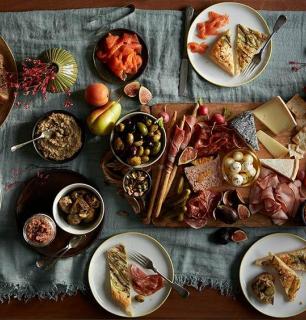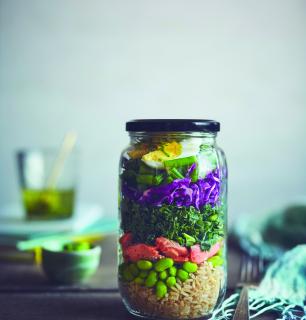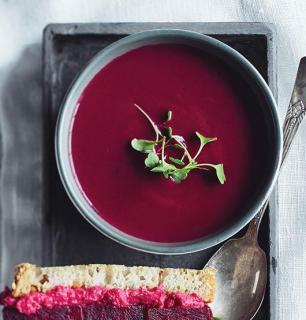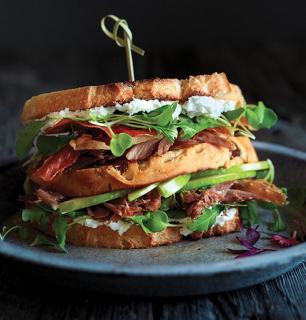a true classic
I’m standing in front of a display case of pre-packaged hams. I’m bombarded by labels, colours, so many words! The labels point out subtle differences in their products that leave me paralyzed with doubt. Where does ham come from? How is it cooked? What ingredients should I worry about? And, ultimately, what do I really know about ham?
The charcuterie industry is in crisis. Consumers are left scratching their head when standing in front of the ham counter. And they worry about colon health. In fact, just under a year ago, Michèle Rivasi, a Member of the European Parliament from the Green Party in France – a country well-known for its cured meats – sounded the alarm to raise awareness about nitrites, claiming they form carcinogenic molecules.
Ham producers countered that banishing nitrites would open the door to Clostridium botulinum, a form of bacillus that’s resistant to pasteurization and that, in low-oxygen conditions (like a vacuum pack, for instance), secretes one of the most powerful toxins in the world. Yikes! Since then, things have gotten even more confusing. And not just in Paris. I asked Stéphane Fiset, co-founder of Première Moisson and originator of its charcuterie division, for a refresher on the basics of white ham. I wanted to shed a little light on the main ingredient of jambon-beurre, that quintessentially Parisian sandwich, which has recently been losing popularity there because of… hamburger franchises, if you can believe it!
So where is ham headed in all of this? “Industrial charcuterie has gotten bad press – and rightly so,” says Stéphane Fiset. “It’s become the art of selling water. Water is free, but protein is worth its weight in gold. In the industry, extremely poor-quality hams can include up to 70% brine. So, with 100 kg of pork meat, the shrewdest (read: shadiest) businesses manage to sell 150 kg of ham. This means over-tumbling the meat, turning it into purée, and adding phosphate, a sneaky chemical that retains a worrying quantity of water.” Yuck! “In our kitchens,” Stéphane continues, “our goal is to bring out aromas and flavours. So, water is the enemy. We add about 6% brine and it evaporates during cooking. If we start with a volume of 10 kg, we’re ultimately left with 9.9 kg of ham and a high rate of natural protein: 21%. And not even a single grain of phosphate is added.” This may have something to do with the fact that the company spearheads efforts to sell white ham in Quebec.
Stéphane Fiset talks more about the transparent fundamentals involved in producing high-quality charcuterie: working with the whole ham muscle, minimizing the use of brine, banishing phosphates and respecting traditional production methods, which involves ultra-slow cooking. At Première Moisson, white ham means pork from Quebec, deboned by hand, and sourced exclusively from Les Viandes du Breton.* All that’s added is sea salt, water, a little cane sugar, pork stock, and lemon or vinegar. That’s it.
The final ingredient is respect. “The reason we make good bread is that we respect tradition and we work with the product correctly. Our motto has always been to make the best or to make nothing at all. By using the finest ingredients possible and handling them properly, we get results that are in line with our ambitions. And this applies to charcuterie as much as it does to baking. And we have to acknowledge the excellent work of master butcher Jean-Marie Esnault, with whom we’ve worked for a long time. He’s a man of conviction with a very great quality: he’s very reluctant to compromise.”
The texture of Première Moisson’s white ham speaks for itself. The striations show the shape of the whole muscle. If people could read ham like they read palms, they’d see two long lines, the head and the heart, and a very long lifeline! Because Première Moisson’s ham isn’t pumped full of water, it has a relatively inelastic texture and is more flaky and less gelatinous than industrial hams.
And now back to those nitrites. “We’re required by law to control bacterial growth,” explains Stéphane Fiset, “because it’s been proven that specific bacteria are able to develop in anaerobic environments. So it’s a necessary preserving agent. No one’s thrilled about it, but nitrites keep everyone safe from harmful pathogens like Clostridium botulinum. The law is strict about the use of nitrites, and we use the minimum allowed under the guidelines.”
Première Moisson has also developed a line of antibiotic- and nitrite-free charcuteries. But it’s pricey. And so, the line accounts for less than 3% of the company’s charcuterie sales. But let’s face it, organic pork like this really doesn’t have many drawbacks.
Traditional rectangular hams have also evolved over time, in step with customers’ tastes. People don’t want the rind or the layer of fat, which, in the past, used to be choice morsels. The percentage of salt has dropped as well, and will likely go even lower. Clearly this has an impact on the taste, but Quebecers have different priorities now.
In Quebec, the jambon-beurre sandwich, the epitome of Parisian life, does have its fans, but a ham-and-cheese on ciabatta is much better loved. It needs the perfect ham, not too thin or too thick, with a little mustard and maybe some lettuce (or not). This continues to be the shining star among sandwiches here.
We can talk about ham till the cows come home, but some people prefer turkey. Even though pork is king in the charcuterie world, many communities prefer beef and poultry because they are considered purer.
Poultry has certainly taken flight in the market. At Première Moisson, turkey breasts get the same choice treatment as pork. They contain less water and more protein than the competition. Using the same focus on respect for traditional methods, the whole breasts are vacuum cooked in their own broth to bring out the fullness of the flavours. And, let’s not forget that turkey ham is probably easiest on the conscience amidst the hubbub about eating meat.
How will all of these issues play out? Our crystal ball is pretty murky on the subject. But one thing is clear: the time for integrated pork farming and careful ham production is now!
*Les Viandes du Breton was the first company in the North American pork industry to be awarded Certified Humane Raised and Handled® status from Humane Farm Animal Care.
A pig story
The inhabitants of Salies-de-Béarn, a small town in southwestern France, located between Pau and Bayonne, are charming! They have a legend about how, in the 17th century, a wild boar that had been wounded by hunters ended up in a salt marsh. This unfortunate ancestor of modern-day pigs was found a few days later near death, coated in a crust of white crystals. But before it died, the pig uttered, Si you n’y éri mourt, arrès n’y biberé – “Without my death, no one could live here.” There is a wild boar on the coat of arms of Salies-de-Béarn, and the town claims to be part of the origin story of French ham – despite Paris, which believes it is the centre of the white-ham universe.
Our Turkeys
Turkeys were first brought back to Europe by conquistadores in 1521, after the Spanish conquest of Mexico, which they still believed to be India. Because of this, the large bird became known in French as poules d’Inde or “India hens,” which was eventually shortened to simply dinde. A similar mistake was made by the English, who mixed up these New World birds with a completely different wild fowl – though there is some debate about which – that was being sold in Europe by the Turks. These were all known as “turkey-cocks or turkey-hens.” Eventually the New World birds became part of the English diet and the name was shortened to “turkey.”
Our recipes
See all recipes




